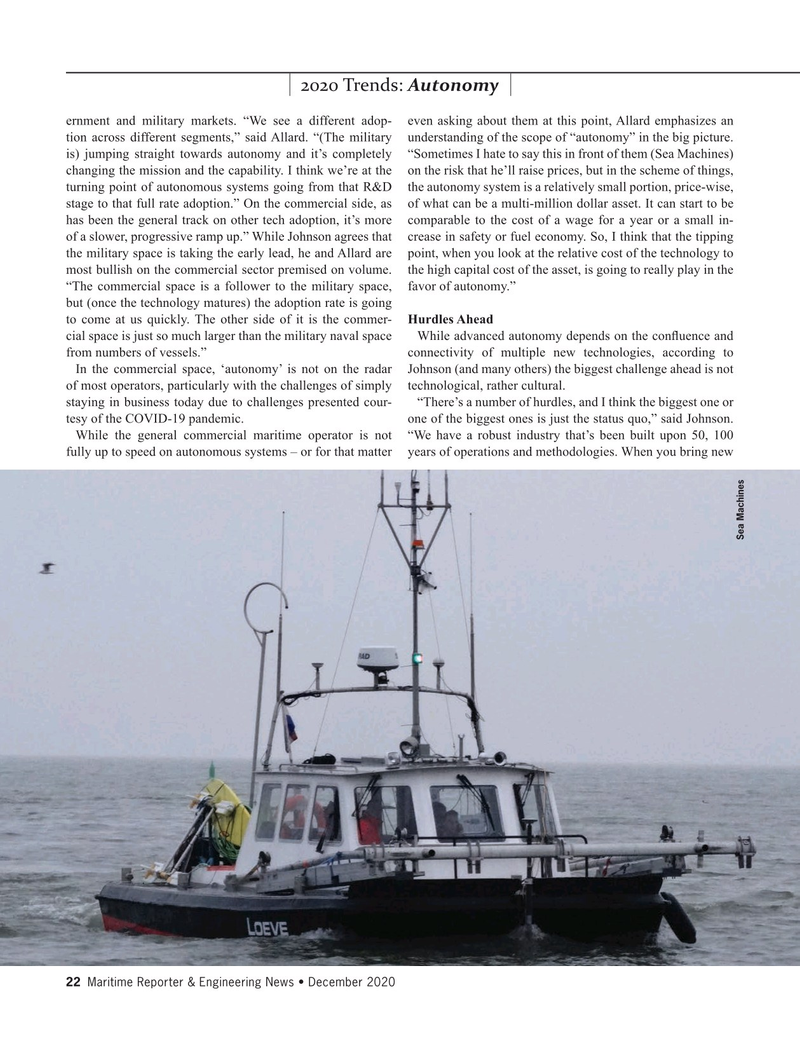
Page 22: of Maritime Reporter Magazine (December 2020)
Great Ships of 2020
Read this page in Pdf, Flash or Html5 edition of December 2020 Maritime Reporter Magazine
2020 Trends: Autonomy ernment and military markets. “We see a different adop- even asking about them at this point, Allard emphasizes an tion across different segments,” said Allard. “(The military understanding of the scope of “autonomy” in the big picture. is) jumping straight towards autonomy and it’s completely “Sometimes I hate to say this in front of them (Sea Machines) changing the mission and the capability. I think we’re at the on the risk that he’ll raise prices, but in the scheme of things, turning point of autonomous systems going from that R&D the autonomy system is a relatively small portion, price-wise, stage to that full rate adoption.” On the commercial side, as of what can be a multi-million dollar asset. It can start to be has been the general track on other tech adoption, it’s more comparable to the cost of a wage for a year or a small in- of a slower, progressive ramp up.” While Johnson agrees that crease in safety or fuel economy. So, I think that the tipping the military space is taking the early lead, he and Allard are point, when you look at the relative cost of the technology to most bullish on the commercial sector premised on volume. the high capital cost of the asset, is going to really play in the “The commercial space is a follower to the military space, favor of autonomy.” but (once the technology matures) the adoption rate is going to come at us quickly. The other side of it is the commer- Hurdles Ahead cial space is just so much larger than the military naval space While advanced autonomy depends on the con? uence and from numbers of vessels.” connectivity of multiple new technologies, according to
In the commercial space, ‘autonomy’ is not on the radar Johnson (and many others) the biggest challenge ahead is not of most operators, particularly with the challenges of simply technological, rather cultural.
staying in business today due to challenges presented cour- “There’s a number of hurdles, and I think the biggest one or tesy of the COVID-19 pandemic. one of the biggest ones is just the status quo,” said Johnson.
While the general commercial maritime operator is not “We have a robust industry that’s been built upon 50, 100 fully up to speed on autonomous systems – or for that matter years of operations and methodologies. When you bring new
Sea Machines 22 Maritime Reporter & Engineering News • December 2020
MR #12 (18-33).indd 22 12/4/2020 8:46:42 AM

 21
21

 23
23
